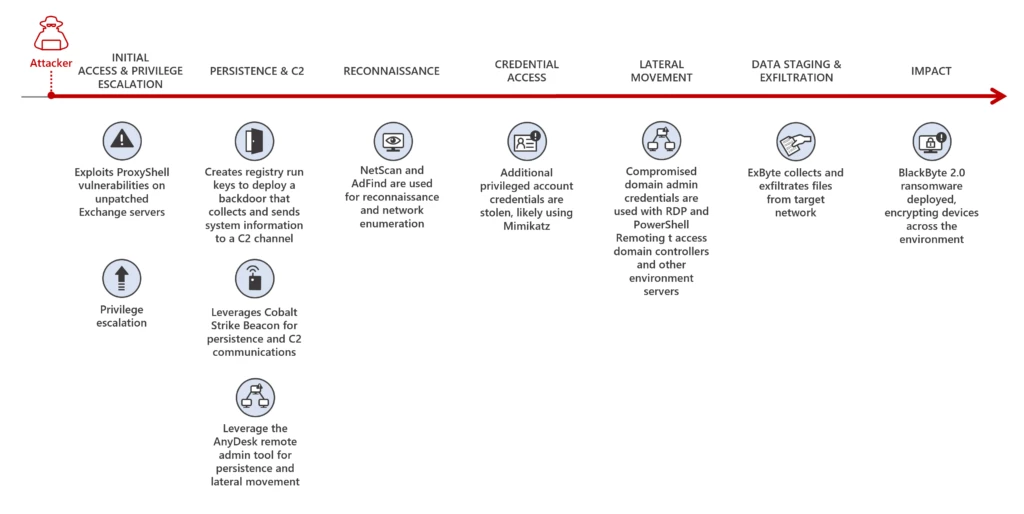27.07.2023
Healthcare compliance in 2023 is being driven by a combination of increased regulatory scrutiny, technological advancements, and a growing focus on patient-centric care. As a result, organizations are increasingly expected to adhere to stringent regulations, safeguard patient data, maintain ethical practices, and ensure the delivery of high-quality care.
This necessitates a proactive approach to compliance, with healthcare providers and institutions striving to stay ahead by adopting robust systems, training staff, and embracing innovative solutions to mitigate risks and protect both patients and their reputation.
What is Healthcare Compliance?
Compliance is the adherence to regulations, guidelines, and ethical standards aimed at safeguarding patient privacy, data security, and overall quality of care. It involves staying up to date with evolving laws, implementing necessary measures, and ensuring organizational practices align with industry standards.
Healthcare Compliance Regulations
Healthcare compliance regulations include:
- The Health Insurance Portability and Accountability Act (HIPAA), which sets standards for protecting patient health information and establishes penalties for non-compliance.
- The Affordable Care Act (ACA), which focuses on improving healthcare access and quality while combating fraud and abuse.
- The Centers for Medicare and Medicaid Services (CMS), which plays a crucial role by overseeing programs and regulations related to these government-sponsored healthcare services.
Compliance with these regulations is essential for healthcare organizations to maintain trust, avoid penalties, and provide high-quality care.
Who Regulates the Healthcare Industry?
The healthcare industry is regulated by several entities, including government agencies and regulatory bodies. In the United States, the primary regulators include:
- The U.S. Department of Health and Human Services (HHS), which oversees several agencies responsible for healthcare regulation, such as the Centers for Medicare and Medicaid Services (CMS) and the Office for Civil Rights (OCR).
- The Food and Drug Administration (FDA) who regulate drugs, medical devices, and food safety
- The Drug Enforcement Administration (DEA) who monitor controlled substances. State health departments and professional boards.
What are the Most Important Healthcare Regulations?
Several regulations stand out as the most important in the healthcare industry as follows:
The Social Security Act
The Social Security Act, enacted in 1935, is a landmark piece of legislation in the United States that established the Social Security program. It provides benefits to retirees, disabled individuals, and surviving family members, aiming to alleviate poverty and provide economic security.
The Health Insurance Portability and Accountability Act (HIPAA)
The Health Insurance Portability and Accountability Act (HIPAA), enacted in 1996, safeguards the privacy and security of individuals’ health information. It sets standards for the electronic exchange of health information, ensures the confidentiality of medical records, and grants patients certain rights over their health data.
The Health Information Technology for Economic and Clinical Health ACT (HITECH)
The Health Information Technology for Economic and Clinical Health Act (HITECH) was passed in 2009 as part of the American Recovery and Reinvestment Act. It promotes the adoption and meaningful use of electronic health records (EHRs) and strengthens privacy and security protections for health information.
The False Claims Act
The False Claims Act is a federal law that dates back to the Civil War era. It allows private individuals, known as whistleblowers, to file lawsuits on behalf of the government against those who defraud federal programs, such as Medicare and Medicaid, by submitting false claims for payment.
The Anti-Kickback Statute
The Anti-Kickback Statute prohibits the exchange of anything of value in return for referrals or generating business for federal healthcare programs. This law aims to prevent kickbacks and improper financial arrangements that could compromise medical judgment and inflate healthcare costs.
The Physician Self-Referral Law
The Physician Self-Referral Law, also known as the Stark Law, prohibits physicians from referring Medicare or Medicaid patients to entities in which they have a financial interest, with exceptions. This law prevents potential conflicts of interest that could influence medical decision-making and billing practices.
The Patient Protection and Affordable Care Act
The Patient Protection and Affordable Care Act (ACA), passed in 2010, is a comprehensive healthcare reform law. It expands access to health insurance, implements consumer protections, such as prohibiting denial of coverage due to pre-existing conditions, and introduces various cost-containment measures.
The Interoperability and Patient Access Final Rule
The Interoperability and Patient Access Final Rule, issued in 2020, is part of the 21st Century Cures Act. It requires healthcare providers, health plans, and health information technology developers to improve interoperability and facilitate patient access to their electronic health information.
The Hospital Price Transparency Final Rule
The Hospital Price Transparency Final Rule, implemented in 2021, requires hospitals to disclose their standard charges for healthcare services in a machine-readable format. This rule aims to increase price transparency, empower patients to make informed decisions and promote competition in the healthcare market.
Why is Healthcare Compliance so Important?
Healthcare compliance is necessary due to the following main reasons:
First and foremost, it ensures that healthcare organizations operate in accordance with applicable laws, regulations, and industry standards. Compliance helps protect patient safety and privacy by ensuring that healthcare providers follow protocols for handling sensitive health information, maintaining secure systems, and implementing proper safeguards against data breaches.
By adhering to compliance regulations, healthcare organizations demonstrate their commitment to maintaining the highest standards of care and ethical practices.
Moreover, healthcare compliance helps mitigate legal and financial risks. Non-compliance can result in severe consequences, such as hefty fines, penalties, and legal actions, which can significantly impact an organization’s reputation and financial stability. By actively engaging in compliance efforts, healthcare organizations can minimize the risk of violations, protect their reputation, and avoid potential litigation.
Finally, healthcare compliance promotes a culture of integrity, accountability, and transparency. It encourages healthcare professionals to adhere to ethical guidelines, maintain accurate records, and engage in responsible billing practices.
Compliance programs also promote internal monitoring, auditing, and reporting mechanisms, fostering an environment where unethical or fraudulent activities are detected and addressed promptly.
Ultimately, healthcare compliance helps ensure the delivery of high-quality care, protects patients’ rights, and maintains the trust of individuals seeking healthcare services.
Privacy & Quality Patient Care
Protecting patient privacy is essential for ensuring quality patient care. When patients trust that their personal health information will remain confidential, they are far more likely to share vital details with healthcare providers, leading to accurate diagnoses and tailored treatment plans.
By implementing robust privacy measures, healthcare organizations can uphold patient confidentiality, enhance trust, and maintain the integrity of the patient-provider relationship, improving the quality of care delivered.
Healthcare Worker Protection
By implementing measures such as appropriate staffing levels, comprehensive training, and access to personal protective equipment, healthcare organizations can protect their workers from occupational hazards, minimize the risk of injuries or infections, and promote a healthy work environment.
Safeguarding healthcare workers’ physical and mental well-being contributes to their ability to provide quality care and ensures the sustainability of the healthcare workforce.
Avoiding Fraud
Healthcare fraud involves deceptive practices such as submitting false claims, providing unnecessary services, or billing for services not rendered. By implementing robust fraud detection and prevention mechanisms, such as auditing processes and internal controls, healthcare organizations can identify and prevent fraudulent activities.
This helps protect valuable healthcare resources, ensure that funds are directed towards legitimate patient care, and maintain the public’s trust in the healthcare system.
Staying Compliant with Regulations
By staying compliant, healthcare organizations mitigate legal and financial risks, maintain their reputation, and demonstrate a commitment to providing high-quality care while upholding ethical standards. Regular monitoring, training, and robust compliance programs are key to achieving and maintaining regulatory compliance.
10 Best Practices for Creating a Healthcare Compliance Plan
By implementing key strategies, organizations can establish a strong foundation for compliance and risk management as follows:
1. Designate a Chief Compliance Officer
Designate a CCO who has the authority and resources to develop, implement, and oversee the compliance program, ensuring adherence to regulatory requirements and promoting a culture of compliance throughout the organization.
2. Educate the Employees
Employees should be knowledgeable about their roles and responsibilities in maintaining compliance, including privacy and security of patient information, ethical billing practices, and reporting mechanisms for potential compliance violations.
3. Build an Effective Compliance Reporting System
Clear reporting channels, such as hotlines or anonymous reporting mechanisms, should be in place to capture and address compliance-related issues promptly.
4. Build a Risk Mitigation Plan
Conduct regular risk assessments to proactively identify vulnerabilities, implement controls and mitigation strategies, and monitor ongoing compliance to minimize the likelihood of compliance breaches.
5. Ensure Cybersecurity at Every Level
Implement robust security measures, such as encryption, access controls, and regular security audits to safeguard electronic health records and other sensitive information from unauthorized access or breaches.
6. Make Sure Your Telemedicine Services Are Secure
Implement secure telemedicine platforms, encryption protocols, and HIPAA-compliant telehealth practices to maintain compliance while delivering remote care.
7. Use a Compliant Talent Acquisition Process
Establish a compliant talent acquisition process that includes thorough background checks, verification of licenses and credentials, and adherence to equal employment opportunity guidelines. By ensuring compliance in the hiring process, organizations can minimize the risk of employing individuals with a history of compliance violations.
8. Develop Very Clear Policies
Put clear and comprehensive policies and procedures in place that cover all aspects of healthcare compliance, including privacy, security, billing, and ethical conduct. Policies should be readily accessible, regularly reviewed, and updated to reflect changes in regulations or organizational practices.
9. Conduct Regular Compliance Audits
Carry out regular compliance audits to assess the effectiveness of the compliance program, identify areas for improvement, and ensure ongoing adherence to regulatory requirements. Audits should include internal reviews, assessments of documentation and procedures, and external audits if necessary.
10. Address Noncompliance Swiftly
Establish protocols for investigating and resolving compliance violations, implementing corrective actions, and ensuring accountability. Timely response and appropriate disciplinary measures demonstrate a commitment to compliance and discourage further non-compliance.
The Repercussions of Noncompliance
Noncompliance with healthcare regulations can have severe consequences which can include financial penalties, legal actions, damage to reputation, loss of trust, and potential harm to patients. Subsequently, it is essential for healthcare organizations to prioritize compliance and proactively mitigate risks.
To help ensure your organization’s compliance, we recommend using a comprehensive compliance checklist our HIPAA Compliance Checklist.
Source :
https://www.perimeter81.com/blog/compliance/healthcare-compliance



